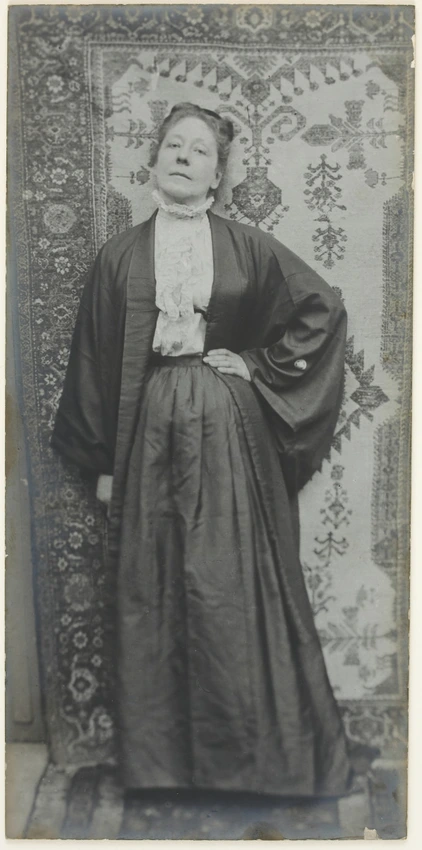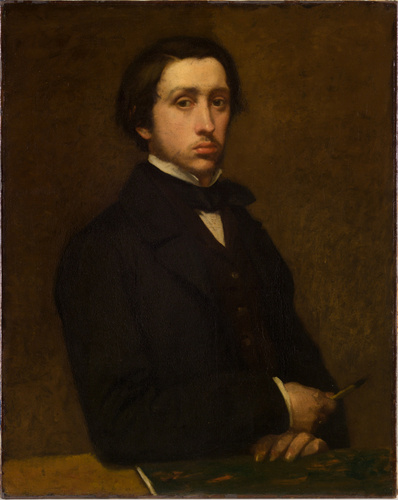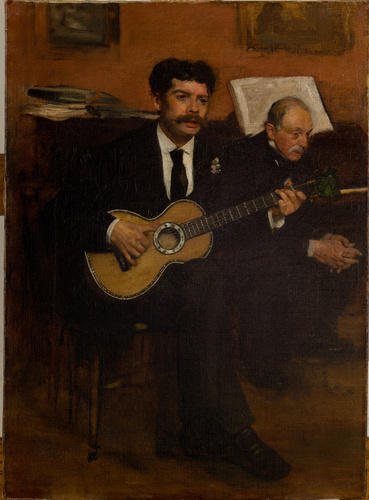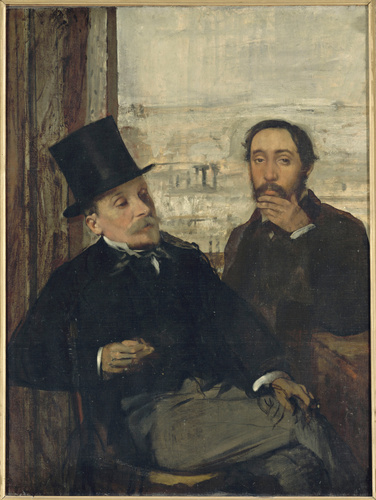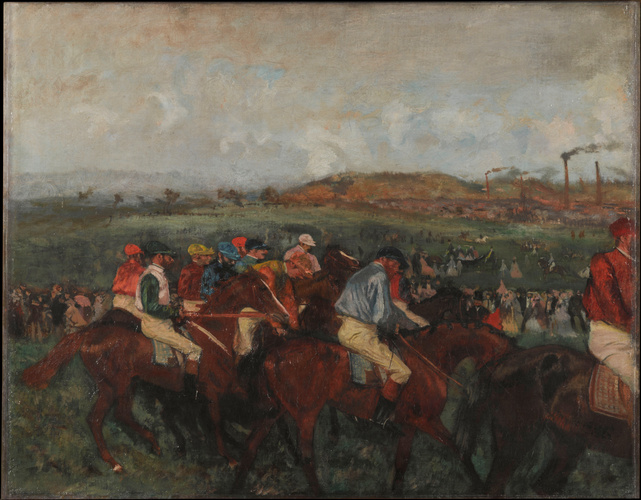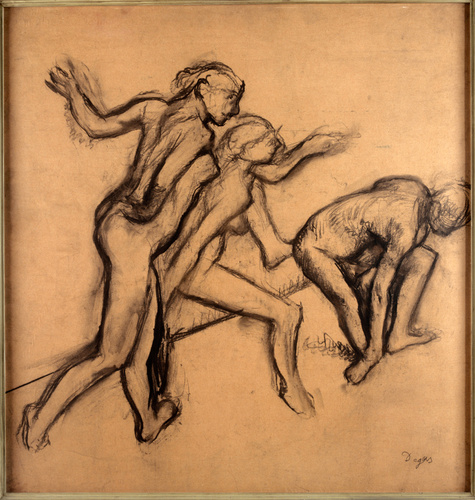Hortense Howland
Hortense Howland (1835-1920), née Louise-Marie Delaroche-Laperrière, was the wife of a rich American, William Edgar Howland. She lived apart from her husband and moved in artistic circles in Paris. She kept up a long correspondence with Eugène Fromentin, a writer and painter who was hopelessly in love with her, saw Degas, the Halévys, Maupassant and Proust.
Like many of her contemporaries in the 1880s, Hortense Howland dabbled in photography. Her influence was certainly behind Degas' taste for arranging theatrical scenes to be photographed. Even before he began to take photographs himself, Degas organised tableaux vivants, using his friends as actors. A local photographer, Walter Barnes, printed them.
Later, throughout the year 1895, Degas developed a real passion for taking photographs. He made many portraits of his family and friends, in groups or as single figures, and talked compulsively about them.
Whereas in his art he usually worked with light and shade effects, this photograph is fully lit. The graphic effect comes from the model's dark silhouette outlined against the pale background of a rug hung on the wall, creating an image that is relatively atypical in Degas's photographic work.
